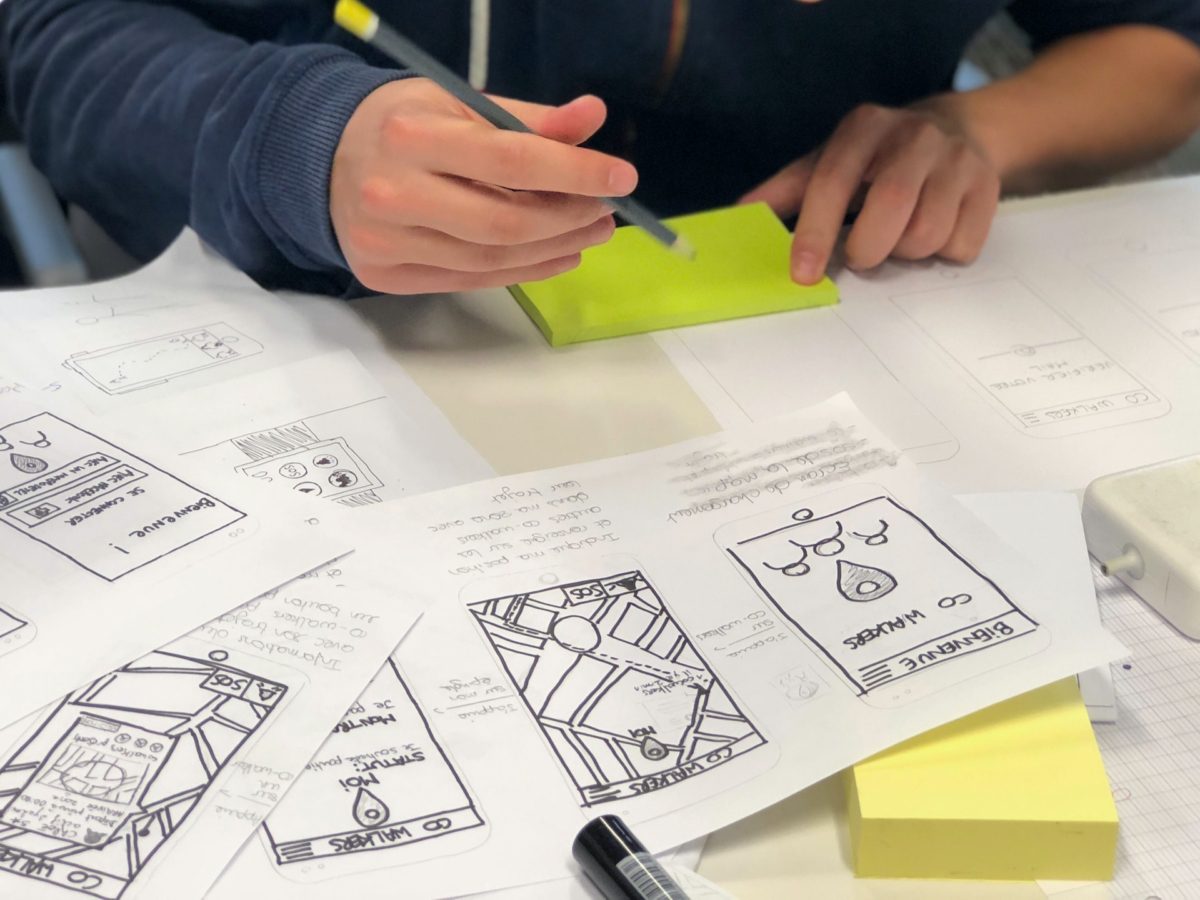Have you ever wondered how brands like Apple, Starbucks, and Netflix manage to achieve worldwide recognition and success? The secret lies in their global strategy.
MVP, i.e. the Minimum Viable Product, is the perfect way to check whether what your startup offers will actually meet the expectations of your potential customers. How to carry out the product development process to get satisfactory results? We will tell you all about it in this article!
What is Minimum Viable Product?
MVP stands for Minimum Viable Product. The definition says that it is a version of the product that the company can, and wants, to release in order to obtain initial customers and get instant feedback from them. It is worth noting that MVP is not the same as the prototype. A prototype is a sample of some basic business idea that was created to represent a concept. The Minimum Viable Product, on the other hand, is launched in order to check how it will be received by the target group for which it was created. This method of assessing profitability is very often used in the business world.
What is MMP?
At this point, it is also worth mentioning the MMP, i.e. Minimum Marketable Product. This is a concept from agile development. Many people do not see the difference between the two, but it is very easy to understand. MMP is a product that will bring profits to the company with the least effort put into its production. On the other hand, companies build an MVP to gain customer reviews in the early stages of operation and thus develop the product as much as possible in order to make it attractive to the target audience.
Where did the concept of Minimum Viable Products come from?
The concept of MVP came from the lean startup methodology, which is used by many people opening a business of this type. Based on this idea, a startup is considered an experiment, and its product is an innovation that will be developed constantly. The original product may be imperfect, not include all the features, or have a few software glitches, but it must contain enough functionalities to reach customers and encourage them to use it. This is an option for both service-based startups and those that offer physical or digital products.
5 main types of MVP development
Minimum Viable Products can be divided into different types that are adapted to the needs of a given business. When it comes to startups, the five most common options are:
Concierge MVP
Concierge MVP is about giving active users personalized services that are based on assistance provided to users so that they can determine if they need what you offer. For example, a startup offering a subscription meal delivery service might manually prepare and deliver meals to a small group of customers to test the concept before building a larger operation. The best examples of Minimum Viable Products of this type are AirBnB and Food On The Table.
Flintstone MVP
In order to build an MVP of this type you have to perform tasks manually until they are automated. The name is not accidental, because it comes from the cartoon character Fred Flinstone, who, for example, propelled the car with the power of his legs. The idea is to test certain solutions without investing in automation, and later, when the product turns out to be successful, develop those processes.
Piecemeal MVP
With this concept, the most important thing is to test several different core features of the service or product at once, and not just focus on the core functionality. Thanks to this approach, startup owners can collect feedback from customers regarding functionalities that are the most valuable for them, and thus prioritize them during the development process. This is a common practice among tech startups that do not like to limit themselves when building an MVP.
Single Feature Application MVP
This type of MVP development for startups is the complete opposite of the previous one. According to this concept, at the very beginning, you should focus only on the basic function of the product or service to see how profitable it is before deciding to spend money on it. This approach allows startups to collect user feedback and improve their product or service before scaling up.
Landing Page MVP
Landing Page is a single website that presents the offer, describes the product, shows how to use it, and also contains a Call to Action button, which encourages customers to buy the product. It’s a great way of conducting market research and finding out how many people are interested in what you have to offer. Landing Page is therefore an ideal way to check whether you have created a successful MVP.

MVP development for startups
How to build MVP that works? Here are some steps you cannot skip in the process if you want to be successful!
- Research target market
What seems interesting, innovative, or necessary to you may turn out to be completely useless for the potential customers whose needs you want to target. You need to be sure that the market is actually waiting for your product or service. Target market research can be performed in many different ways, but the easiest is to conduct surveys/interviews with representatives of your target audience.
2. Added value
It is not enough to just build an MVP. The next step is to find a differentiator that will make customers choose your product and not your competition’s. Think about what added value you can offer the target group, what benefits they will gain from choosing your offer, and what gap in the market your product or service will fill – make sure to emphasize these points often in your communication.
3. UX
When developing a business model, a company must primarily care about UX, i.e. User Experience related not only to the product or service itself but also to the process of its purchase.

4. Prioritize the main functionality
As we mentioned, the MVP development process is continuous, but by the time you release it to the target market, it should already have the main functionality fine-tuned. However, in order to know which feature to release first, you need to assign priority to each of the options you’re considering, and only after developing the ones with the highest priority, move on to developing new features.
5. Start building your MVP
Once you’ve gone through the above four steps, it’s time to start the MVP development process. Make sure that the product/service you decide to launch is easy to use, engaging, and relevant to the target users.
All that remains later, is to learn from mistakes, collect customer feedback and develop your business in accordance with the direction indicated by the target group. Check out our blog for more branding tips for startups.
Why is it worth it to build an MVP for the target market?
Launching a Minimum Viable Product is not only a convenient solution but also a smart way of spending money that could otherwise be “sunk” in a given business. By developing an MVP, entrepreneurs can perform the necessary tests and gain a lot of feedback from the target group while putting in a minimum effort and only part of the budget allocated to the creation of a given product or service. Of course, it is not just about financial security, which is ensured when the product turns out to be unsuccessful. It is also about the possibilities offered by an MVP, because thanks to it, people creating a given product or service are able to develop it much faster and more reasonably.
Key Benefits of Minimum Viable Product
Launching a successful MVP has a lot of advantages. First of all, it allows for quick verification of a business concept, as well as a very efficient identification of problems that may arise in connection with it. In addition, it is much easier to understand the needs of the target audience if you ask them directly. Thanks to the fact that such information will flow to you, you will be able to refine your product to the maximum and deliver the final version, which will be close to the ideal. It is also of no small importance that when you build an MVP, you can save time and money, as well as significantly reduce the risk that the investment made will turn out to be very unsuccessful which causes many startups to fail. Keep in mind that the MVP development cost is much lower than the cost of releasing a full-fledged product from the get-go.
MVP development process – why is it a must-have?
We can say that there are six basic factors that make an MVP a must-have for startups. Let’s discuss them.
- Increasing the chances of beating the competition
Even if your startup seems extremely innovative to you, you have to understand that someone might come up with the same product idea as you. Therefore, the sooner you release your basic product, even if it is in the form of an MVP, the better because you will be considered a pioneer in the industry and establish yourself as its leader. It is also worth doing thorough competitor research to know what projects they might release in a given period.
2. Preserving finances
As we have already mentioned, an MVP is an economical solution. By releasing a product or service in this form, you use only a fraction of the budget that will be needed to prepare the final version. It allows you to evaluate what the final value proposition of a given product is. In addition, you can save a lot on making unnecessary changes thanks to the direct feedback from your customers which will allow you to implement just enough new features to satisfy them.
3. Reducing the risk of malfunction
Releasing an MVP allows you to not only test the product, but also the entire business model, people’s work, and the general concept. Many startups fail because of a lack of first feedback from a small group of potential customers which could enable them to quickly fix any errors that arise or avoid repeating the same mistakes during the development process.
4. Thoroughly testing the business idea
Thanks to MVP, you will get answers to two basic questions that startup owners ask themselves, namely: “Does my product/service meet my customers’ needs?” and “Will my product be useful to the target group?”. This is especially important in the tech world, where changes are dynamic and the users’ opinions are often not taken into account at all.
5. A better understanding of the market and target group
Nothing shows the needs of the target group and the general situation on the market like the opinion of the interested parties themselves! What’s more, it also allows for customer development. This is one of the biggest advantages when it comes to building an MVP.
6. Early customer acquisition
Launching an MVP can help startups get customers who want to try out a new product or service. Thanks to this, there will be enough money to finance the development process.
Business scaling and MVP
The MVP product development process is of course hugely related to the metrics related to the startup’s ability to scale. These main factors include:
1. Constant and growing customer demand
This metric shows that as market demand is on the rise, it means that now is the perfect time to scale your business. If you notice this already in the Minimum Viable Product development stage, go ahead and invest more money in the development process of the startup, because people like the product.
2. A solid business model
Only a properly built business model will make you feel safe and enable you to scale your business. Minimum Viable Product will make you refine the whole startup idea in accordance with the needs of the target group and your capabilities.
3. Scalable infrastructure
As the development process grows, your infrastructure must grow with it. You need to have the right technology, processes, number of employees and also focus on steady software development for startups. Thanks to MVP, you will see how many resources you need to produce the minimum and it will be easier for you to estimate what you will need after some time to release the final product.
4. A strong team
Thanks to the MVP product development you can estimate how many employees with what competencies you need. This is extremely important because scaling the business is inherently associated with much more work than the current team can handle. It is also important that the MVP development team performs at its highest level.

What happens if you do not use MVP while scaling your business?
Scaling your business is a very delicate topic. It is easy to make a mistake, especially when it comes to when you start this process. What risks can you face if you start scaling too soon?
- Poor product-market fit
If a startup scales too early, without using the Minimum Viable Product development method, the project might not be polished enough to match the user interest of the target group.
- Lack of resources
Scaling requires appropriate financial and human resources. It is impossible to develop a startup without good infrastructure.
- Losing new customers
Companies that scale their business too quickly might find it difficult to attract early adopters because their budget, time, and commitment will be focused primarily on streamlining processes and moving to the next MVP stage at a very fast pace.
- Ineffective processes
If your business processes are not efficient, agile, and one hundred percent compliant at just a starting point, but you start scaling anyway, you can be sure that the efficiency and quality of what you do will be much lower.
- Excessive expenses
As you know, not using a Minimum Viable Product and testing solutions is associated with burning the budget, which is why it is so important to develop your business in a thoughtful way, come up with a good product idea first, and only then start working on it.
- Loss of focus
Scaling often makes startup owners forget about what is important, i.e. about meeting the needs of the recipients. As a result, the mission and business objectives begin to develop, and customer interest in the product or service drops drastically. What is more, it can also lead to a decrease in user satisfaction who have so far chosen your product and were happy with it.
How much can you lose by not releasing an MVP?
We have already talked about the benefits of Minimum Viable Products and what to watch out for when scaling a business without a basic version of the product. What is the most common mistake made by entrepreneurs? First of all, the basic problem of most companies is that they constantly develop the product, analyze the business model, prepare a lot of versions, spend the maximum amount of money, strive for the ideal that has been built in their head, and only when they decide that it is an option close to what they dreamed of, they release it on the market. This is a huge mistake that can cost you a lot of money and time.
By devoting several years to creating your dream product, without testing it on a “live customer” from your target group, you are making one of the biggest mistakes. Why? It may turn out that the product or service itself does not meet the needs of a given group or, for example, that the basic element of the business model fails. Sometimes this makes the product completely unprofitable. If you are lucky, you will have to change only a part of it, and in the worst-case scenario, you will have to start almost from scratch.
All this creates a lot of stress, frustration, and of course, money loss, because you have probably invested not only in the software idea, sales department, and basic advertising in Google Ads but also in more advanced things like social media, and extended marketing materials, e.g. catalogs or content marketing for a startup. By choosing to work on an MVP, you save yourself all that trouble. By allowing customers to provide feedback, you will know which way you should choose and whether your startup idea will be profitable at all.
Is releasing an MVP the same as releasing an unfinished product?
This is a very important aspect of the Minimum Viable Product. Remember that releasing an MVP is not the same as releasing an unfinished product or just the first draft of it. Releasing a Minimum Viable Product means that it is ready enough for the target audience to assess its value, but it lacks some functionalities that will appear in the future, or that the software development to automate sales processes is still not finished. It is supposed to be a full-fledged product that customers can test and express their opinion. If you release something not ready, you can be sure that user feedback will be bad and not valuable at all, because customers will not receive a complete product. In order for an MVP to achieve the expected goal, it is necessary to show the customer a product with its core functionality polished to perfection.
So if, for example, you create an application to sign up for hairdressing services, you must enable users to sign up for different salons, in a given region, for a specific time, with a few clicks. Later on, you can refine the application and add the option of making payments, reading user feedback about a given salon, or contacting a given facility. It all boils down to one MVP rule: the final product may change, but the basic features must remain the same.
Conclusion
To sum up, the process of developing MVPs gives startups the opportunity to simultaneously create and test products or services. By choosing the right type of MVP development for startups and following the necessary steps, companies can reduce risks, increase their chances of project success, and scale their business relatively quickly. However, remember that:
- Minimum Viable Products come in different types and you need to choose the one that best suits your capabilities and makes the best product-market fit. If you cannot do it yourself, use MVP development services, which are offered by specialists in this field.
- The MVP development stage for startups includes identifying the problem, defining the target audience, defining the essential features, and measuring the success of the Minimum Viable Product. You have to go through all of them to get satisfactory results.
- Continuous and thorough market research is necessary.
- You need to consider several things before scaling, such as having a big enough team and infrastructure, which should be preceded by robust tests with the use of MVP.
We hope that now the MVP development is no longer a secret to you and you will use this concept in your business to offer your customers a value proposition that will surprise them. You can also use MVP development services if you have the budget and do not feel up to it yourself. If you need help related to branding, logo for a startup, or marketing, be sure to contact us! We will support your activities in accordance with the requirements of a given industry!






